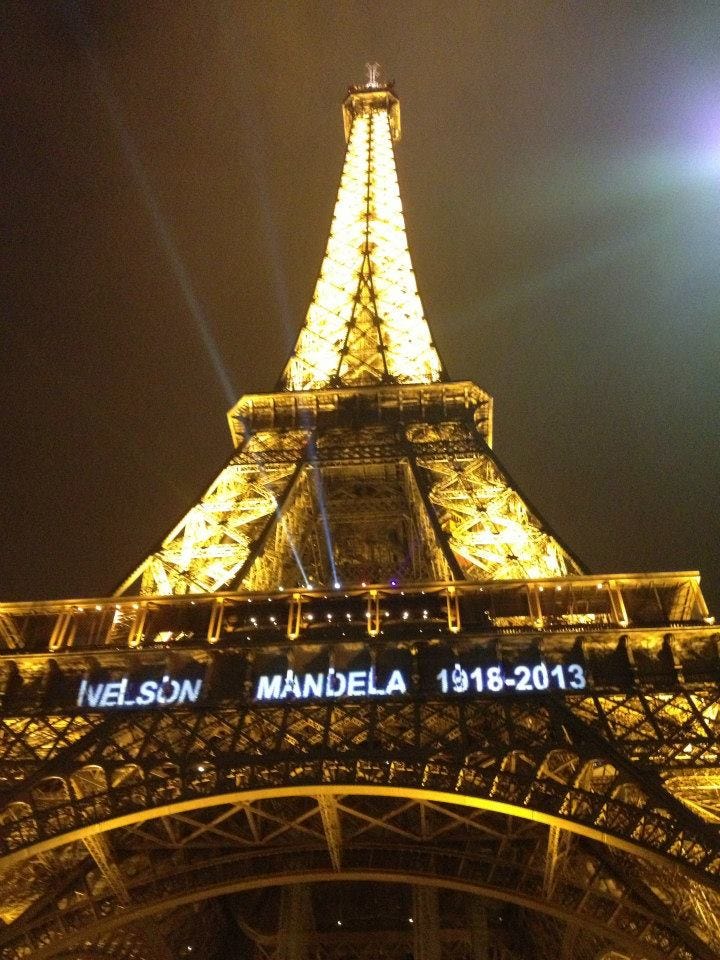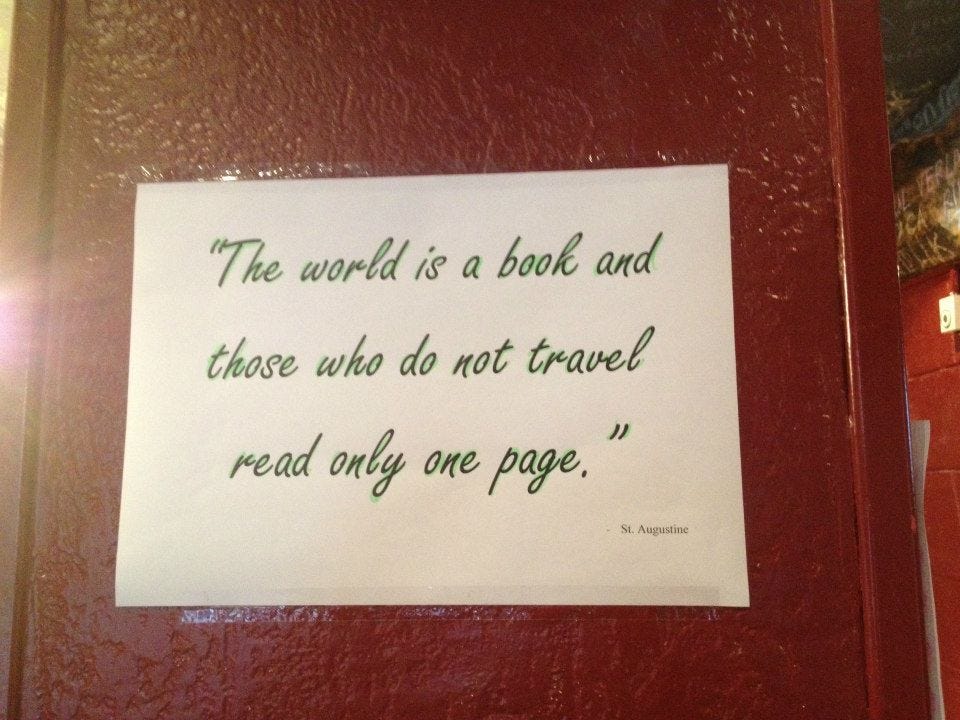Hemingway's Paris Lives On Through The Digital Nomad Movement
Hey reader,
I recently re-read Hemingway’s “The Sun Also Rises” following my first read of his recount of the 1920s in Paris, “A Moveable Feast.” One thing that stuck out to me while reading both was how the leisure-first, work-how-you-want-to mentality of that time is similar to today’s digital nomad movement.
Of course, today we have the benefits of WiFi and instant communication. But creators of all stripes were just as keen to pass time at expat-heavy cafes and jaunt off for excursions on a whim as the nomads of today.
Not to say that the innovation happening in today’s coworking spaces and WiFI cafes is of the caliber of what Hemingway or Stein created — though I suppose time will tell. Still, there are some blatant similarities in the lifestyle. The Lost Generation birthed the remote work movement — and today’s remote workers are simply carrying the torch.
I analyze the connections between the two here.
Community shout-outs
Welcome to the four new subscribers since the last dispatch! My essays vary from journalistic-style deep-dives to personal reflections, but one thing is always consistent — I’m gonna get emo. I hope these essays cause you to feel something.
Big thanks to Molly Duane, a travel nurse who joined my co-host Eben and I on this week’s episode of the No Blackout Dates podcast. What a crazy and incredibly important profession nursing is — this ep is quite the listen.
Now, let’s pass the torch.
Hemingway's Paris Lives On Through The Digital Nomad Movement
In 1921, Ernest Hemingway gained a Paris assignment as a foreign correspondent for The Toronto Star. He would live primarily there until 1928, reporting dispatches for the paper, editing a magazine, and writing, among other works, his breakout novel, “The Sun Also Rises.”
Hemingway was a famous and eccentric character in what became a groundbreaking time for American and international literature and art (ironically, much of which was created outside of the United States). Alongside names including Gertrude Stein, F. Scott Fitzgerald, and Pablo Picasso, Hemingway and the community of creators that surrounded him in Paris revolutionized both their forms of art and the countercultures that inspired it.
Today’s digital nomad movement, anchored by remote workers setting up faraway posts anchored by their laptops and a penchant for doing things their way, are keeping at least some of that counterculture alive.
The Lost Generation created remote work culture
The cohort of expat artists and writers in Paris and elsewhere during the first decades of the 20th Century paved the way for modern remote work culture. Foreign correspondents and expatriates had existed before, but these creatives were the first to both post up abroad and have sufficient communications tools to communicate with home. Writing for far-off publications, the wire was their WiFi, the telegraph their text message.
Much like the digital nomads of today, the Lost Generation moved about on a selfish whim, for no better reason than the ability to do so and the desire for experience and independence.
An introduction to a fellow writer or artist frequently led to a friendship, or at least acquaintance, solely due to circumstance — being an expat in Paris pursuing the same goal. While the stated goal was to “live the life of a writer/poet/artist,” the underlying theme was exactly the same as that of the modern digital nomad: lifestyle design.
Hemingway and his cohorts worked often in cafes, foregoing formal newspaper offices or studios in favor of social establishments that fostered random connections and a wide circle of relationships. When not on a formal assignment, theirs was a life of leisure, with days spent eating and drinking to excess or galavanting off on fishing trips as part of a new movement, one dubbed by Gertrude Stein as the “Lost Generation.”
Hemingway chose Paris for the same reason today’s nomads choose Bali, Chiang Mai, and other remote work hubs
American expats headed to Paris en masse during the 1920s, drawn in part by the heavy influence that the expat scene had on the city’s culture. Artists and writers, in particular, were drawn by the relative ease of finding a familiar community. Jazz had hit the big time in Parisian bars. Housing was affordable in the city then, at least when compared to major US cities.
Thus the attraction for aspiring novelists such as Hemingway, Gertrude Stein, and F. Scott Fitzgerald. Arriving in 1903, Stein was among the first American writers to settle in Paris. She built an artistic community around her, and as word spread of the avant-garde lifestyle and ample networking opportunities, the American literary canon of the time showed up.
They even rented furnished flats for short periods of time, a nod to their lack of physical possessions and penchant for flexibility and prefabricated apartments (Airbnb and coliving spaces, before either were coined).
Compare this with the Indonesian island of Bali over the past decade. One can live comfortably for $1,200 a month on the island, with a private villa, daily restaurant meals, and a scooter on which to motor around. Another few hundred bucks nets luxuries including a pool, house cleaning service, and a coworking membership. All told, a lifestyle reserved for the established upper-middle class in the States is achievable on an annual income of $25,000 in Bali.
Because of this, the community of expats and digital nomads is strong. Equally sufficient is the infrastructure these nomads need to be productive, including fast internet, a strong cafe culture, and a vibrant social community that is easy to penetrate as long as you join one of the prominent coworking spaces.
This isn’t the result of a “chicken or egg” scenario. The expats came, and the infrastructure followed.
In line with Paris in the 1920s, the modern remote worker heads to place largely because of the word of those who came before. Word of the best coworking destinations still travels by mouth (or social media, as it happens now).
In Paris, Stein came, the others followed, and through her parties and rabid social life, combined with the cafe culture of the city, the infrastructure for the Lost Generation’s romp through Europe and beyond was developed.
While perhaps lacking in magnificent artistic grandeur, a similar lifestyle to Hemingway’s Paris can be found in today’s remote work hubs including Bali; Chiang Mai, Thailand; and Spain’s Canary Islands. In each of these places, expat communities crowd into cafes and forge friendships based on shared circumstances.
Like the writers and artists in Paris a century ago, these modern vagabonds will not remain in their posts forever. Most will settle into life’s next phases much closer to home.
But while it happens, the experience of being somewhere new and surrounded by fresh faces after the same “time of their life” is as strong as the as the nostalgia on which we’ll look back on it.
The legacy
“The Sun Also Rises” and “A Moveable Feast” are effective chronicles of expat life in 1920s Paris. Even the title of the latter seems to signify knowing of the hollowness of it all. But the book highlights the fact that at least some of Hemingway’s greatness stems from his ability to trust the reader to pull the humor and wit from his words, rather than emphasize it himself.
I wasn’t there to verify, but Hemingway repeatedly said that “A Moveable Feast” was intended the encapsulate that period of time in Paris for that community. He wrote of the good times, the free-for-all moments of excess, and of the value of being true to friendships. He wrote of mentorship and of artists helping artists.
Sometime in the future, today’s digital nomad will look back at expat life in the Balis and the Chiang Mais and the Medellins of the 2010s and ‘20s and finally understand that it never mattered how many people joined your “online community” or bought your “how-to” course.
Like the Lost Generation, the Beats, the hippies, the punks, and countless other waves of counterculture, the digital nomad movement is and always was about individual lifestyle design enhanced by having a surrounding community with the same goals. It’s about the ability to choose your own path rather than one that society at large pushes you towards. And helping others to do the same. It’s about progress and freedom and honing your talents and skillset to create the life you want.
Let’s hope there are a few good writers around to chronicle it.
I drink a lot of coffee putting Mountain Remote together.
Mountain Remote news and further reading
Selina and TechnoArt have partnered to create an investment fund for digital nomad entrepreneurs, which will fund a dozen concepts per year, according to Globetrender. I’ve been to two Selina locations and they are incredible at bringing together the remote lifestyle with outdoor adventure, and I see this as a great opportunity for those innovating at that intersection.
On my recent heli-ski trip to BC, I spent a night at the OPUS hotel in Vancouver while in transit. The place was phenomenal and is becoming a social hub in the city’s booming Yaletown neighborhood. Here’s my write-up.
I close this week with a great read about how a border town in Zimbabwe is becoming a remote work hub, from the excellent publication Rest of World.
Thanks so much for reading! If you dug this essay, please sent it to one person who will enjoy it.







